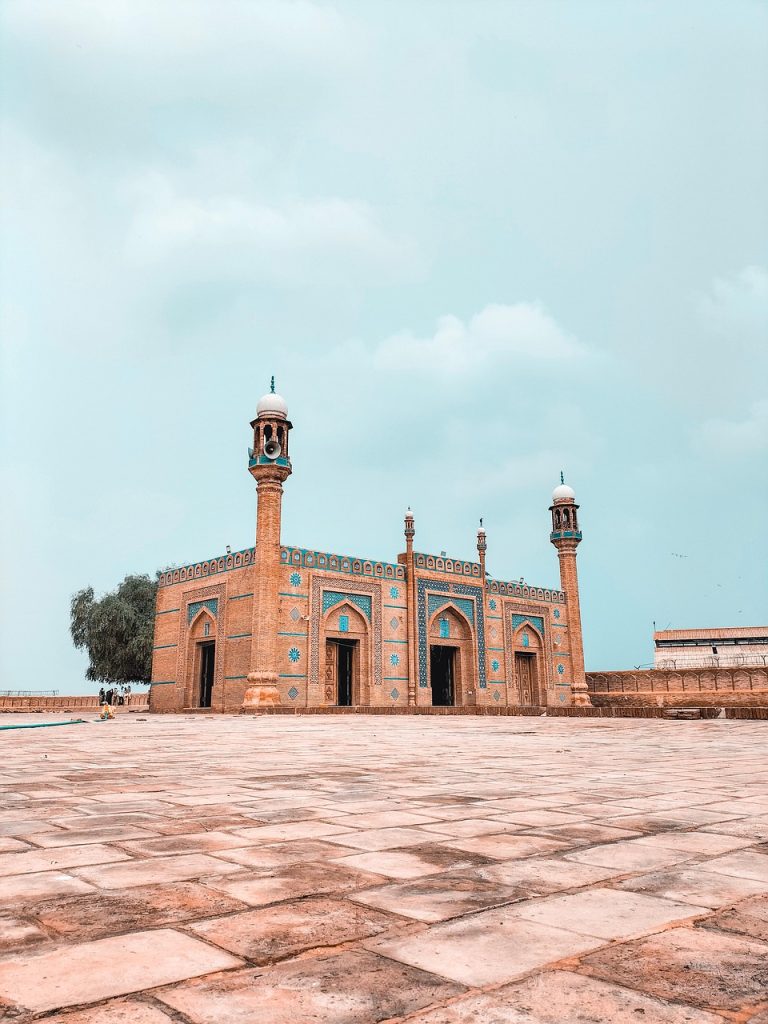Long before modern highways and air travel, the Silk Road served as one of the world’s most significant trade routes, linking the East with the West. Stretching from China through Central Asia to the Mediterranean, it carried not just silk, but ideas, religions, cultures, and innovations. One of the less-discussed yet integral segments of this vast network passed through the region that is now Pakistan. Today, this ancient corridor is witnessing a renaissance. Modern travellers, history enthusiasts, and adventure seekers are retracing these timeworn paths through a land rich in heritage, stunning landscapes, and enduring hospitality.

A Journey Back in Time
Pakistan’s terrain forms a natural bridge between Central Asia and the Indian Subcontinent, making it an indispensable artery of the Silk Road. Cities like Taxila, Gilgit, Hunza, and Skardu were not only bustling centres of trade but also spiritual and cultural melting pots.
Taxila, near Islamabad, was a major hub of Buddhist learning and trade. The ruins of ancient monasteries and stupas bear witness to the thousands of pilgrims and merchants who once passed through. Visitors today can explore the UNESCO-listed ruins and museums, imagining the life of travellers from thousands of years ago.
The Karakoram Highway: A Modern Silk Road
Often referred to as the “Eighth Wonder of the World,” the Karakoram Highway (KKH) is one of the highest paved international roads. Built over a span of 20 years and completed in 1979, it follows the old Silk Road route from Hasan Abdal in Pakistan to Kashgar in China, traversing the dramatic Karakoram Range.
Travelling along the KKH is like witnessing geography and history unfold in real-time. Towering mountains, turquoise rivers, and glacier-fed valleys surround you at every turn. The highway takes you through culturally rich areas such as Hunza and Nagar, where traditions remain largely untouched and the people are renowned for their hospitality.
In particular, Hunza Valley is a gem along this ancient route. Known for its majestic peaks such as Rakaposhi and Ultar Sar, this region also has a fascinating history of caravanserais (roadside inns) that once hosted weary traders and travellers. Today, you’ll find boutique guesthouses and eco-lodges offering similar comfort with a modern twist.
Cultural Intersections
One of the most fascinating aspects of retracing the Silk Road in Pakistan is encountering the confluence of cultures, languages, and beliefs that still echo from the past. In regions like Baltistan, you’ll find a blend of Tibetan and Central Asian influences. The architecture, cuisine, and even the dialects offer clues to centuries of intercultural exchange.
The presence of Buddhist rock carvings in areas like Gilgit-Baltistan and Swat Valley showcases the spread of Buddhism along the trade routes. Many of these ancient carvings are being preserved and studied today, drawing archaeologists and cultural tourists from around the world.
Further south, Multan and Uch Sharif were also critical nodes in the Silk Road web. Known as the City of Saints, Multan’s Sufi shrines tell a story of spiritual evolution that took place alongside the flow of goods and ideas. These architectural masterpieces still stand, offering insight into the religious syncretism encouraged by Silk Road exchanges.
Culinary Treasures Along the Route
Food is another vivid thread connecting modern-day travellers to the ancient Silk Road. The cuisine found along Pakistan’s Silk Route corridor offers a delicious blend of Persian, Chinese, Indian, and Central Asian influences.
In Gilgit-Baltistan, dishes like mamtu (steamed dumplings), harisa (meat and wheat porridge), and apricot-based stews hint at this unique culinary heritage. Street food in Peshawar or Rawalpindi echoes a long-standing tradition of markets bustling with aromas and flavours that once tempted traders.
Travellers can indulge in local culinary experiences by visiting community-run kitchens or joining cooking workshops that teach recipes passed down through generations.
Adventure and Eco-Tourism
Aside from cultural and historical allure, the Silk Route in Pakistan is increasingly becoming popular for adventure tourism. The mountainous terrain offers hiking, climbing, and trekking opportunities for all levels. Treks to Fairy Meadows and Nanga Parbat Base Camp are bucket-list experiences for many adventurers.
Eco-tourism initiatives in the region promote responsible travel while preserving the environment and empowering local communities. These projects often follow the same paths ancient traders did, now reimagined as scenic trekking routes or wildlife tours.
The Deosai Plains, also known as the Land of Giants, is another natural wonder located in the Gilgit-Baltistan region. Once a silent witness to the caravans passing through, it now attracts travellers for its rare flora, fauna, and raw beauty.
Modern Infrastructure Meets Ancient Routes
Pakistan’s government, alongside China, has invested heavily in infrastructure projects through the China-Pakistan Economic Corridor (CPEC). While primarily a trade initiative, it also indirectly facilitates tourism by improving accessibility to remote regions along the old Silk Road.
The development of Skardu and Gilgit airports and an expansion of domestic flight routes has made these once-isolated areas more reachable than ever before. For international travellers, the increase in cheap flights to Pakistan has opened new possibilities to explore these incredible regions without breaking the bank.
Planning Your Journey
When planning your Silk Route reboot through Pakistan, it’s best to start in Islamabad. From there, you can fly or drive to Gilgit, Skardu, or Hunza. Depending on your interest, tailor your itinerary to include archaeological sites, cultural hubs, or natural wonders.
The best times to visit are spring (April to June) and autumn (September to October), when the weather is pleasant, and the landscapes are at their most striking. Remember to arrange permits in advance for certain restricted areas and always check the latest travel advisories.
Whether you’re seeking solitude in nature, stories carved in stone, or a taste of ancient hospitality, Pakistan offers a uniquely layered experience along the Silk Road.
Why Now?
There’s no better time to explore this legendary route. As the world rediscovers the value of slow, meaningful travel, the Silk Road invites us to connect with our shared human heritage. And with a growing number of cheap flights to Pakistan, it’s becoming easier and more affordable to embark on this epic journey.
Pakistan’s segment of the Silk Road isn’t just a corridor of the past—it’s a bridge to a future of cultural understanding, sustainable tourism, and timeless adventure.
What is your reaction to this?

 I liked it
I liked it Wonderful
Wonderful Thanks
Thanks Good
Good Hahaha !
Hahaha ! Incredible
Incredible Interesting
Interesting Wrong
Wrong